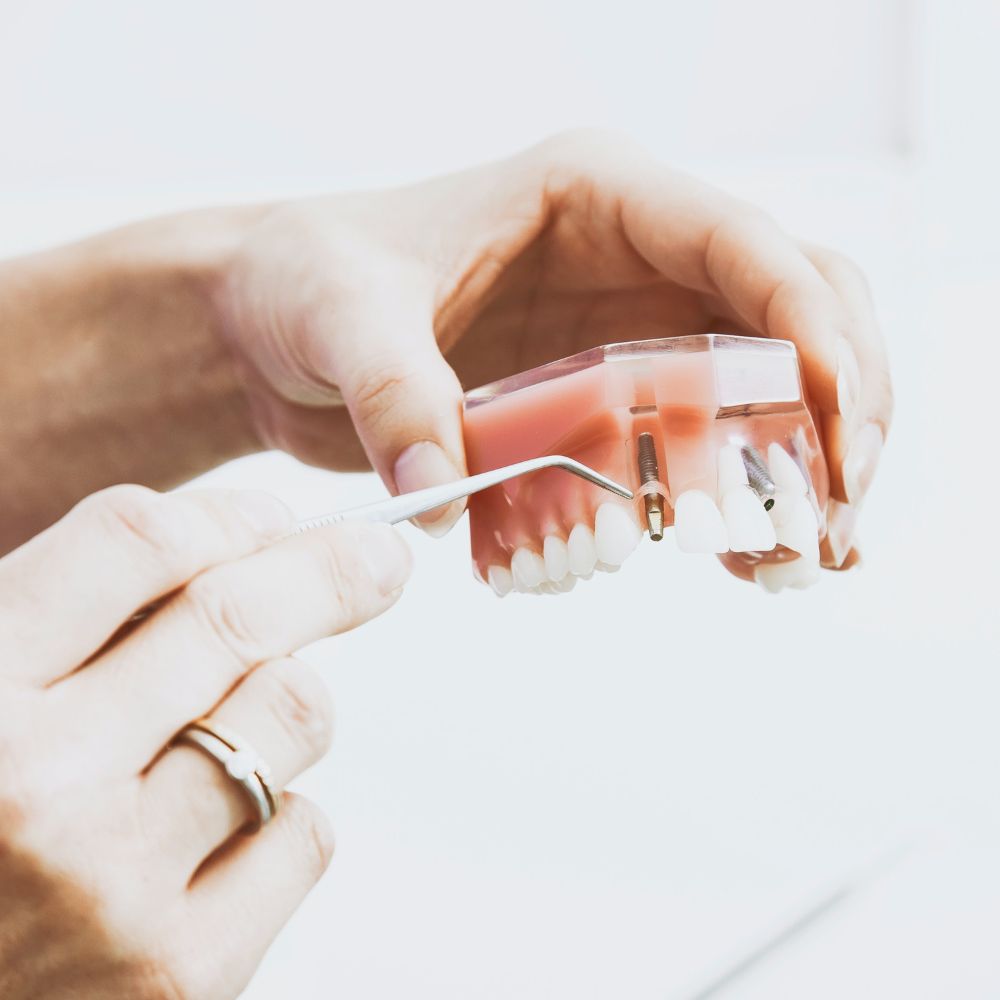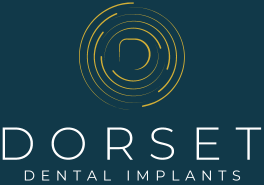The current tooth needs to be removed before a dental implant can be placed. Many patients come to Dorset Dental Implants with teeth missing. Other patients require teeth to be removed. Read on to see what the most common pre-procedures include.

Atraumatic extraction
Years ago, a successful extraction paid no attention to the delicate bone and gum tissue surrounding teeth that unfortunately had to be removed. Dentists would be trained to actually cause very small breaks in the bone surrounding the teeth, which would aid removal of the tooth, but the post-procedure healing meant the bone and gum tissue would recede severely.
This would make the subsequent placement of dental implants difficult and possibly even impossible.
Luckily, techniques have changed significantly, and the removal of teeth is now much more gentle on the bone and gum surrounding the tooth.
Special instruments are used to gently push the gum and thin, delicate bone surrounding the tooth.
The body may then heal in such a way that the recession of the bone and gum tissue is kept to a minimum and the recovery is much more comfortable for the patient.
In addition, this means that the placement of a dental implant can occur either at the time of the extraction or within several weeks of the extraction.
How soon after tooth extraction can you have an implant
A dental implant can be placed on the day of tooth removal, several weeks later (‘early’) or several months later (‘delayed’).
The decision on when to place the implant is determined by the position in the mouth of the extraction, the health of the gum and bone around the extracted tooth, bite forces in the area, the type of gum tissue and the experience of the dentist placing the implant.
If an implant is placed on the day of tooth removal, you will almost definitely require the placement of a bone augmentation material into the extraction socket and around the implant to optimise the healing around the implant. In addition, placing a temporary tooth into the implant may be possible under particular conditions.

Socket preservation
If a patient requires a tooth removal and is considering the placement of a dental implant in the future, in addition to the atraumatic removal of the tooth, a socket preservation technique may be employed.
This involves the placement of sterile harvested or synthetic bone into the extraction socket at the time of extraction or even soon after. Once the material has fully solidified, you can then progress onto the placement of an implant any time in the future.
Guided bone regeneration
When an implant is placed, it is very often necessary to aid the body during the healing process to grow some new bone around the implant, where it was not present previously.
This has two effects in that it strengthens the bone around the implant, helping it cope with the shearing forces during function (when you chew for example), and it encourages the growth of the correct amount of gum tissue around the implant, aiding good hygiene and also crucially important for the final aesthetic result of the tooth to be attached to the implant.
One additional benefit is that it helps the long term health of the tissue surrounding the implant.
When a molar or premolar tooth has been lost in the upper jaw, we often need to carry out a procedure known as a maxillary sinus graft.
There are many names for this procedure (sinus graft, sinus augmentation, sinus lift) but they all describe the exact same procedure.
After tooth extraction in the upper jaw, there may not be enough bone available for the placement of a dental implant.
This procedure allows us to change the maxillary sinus’s shape and size ( but only very slightly ) to place sterile harvested or synthetic bone. Over three to six months, this then solidifies into the patient’s bone, thereby making it possible to support a dental implant.
It is common for the dentist to carry out this procedure at the same time as placing the dental implant, but that is not always possible, so we need to carry out the sinus lift and the implant placement as separate procedures three to six months apart.
